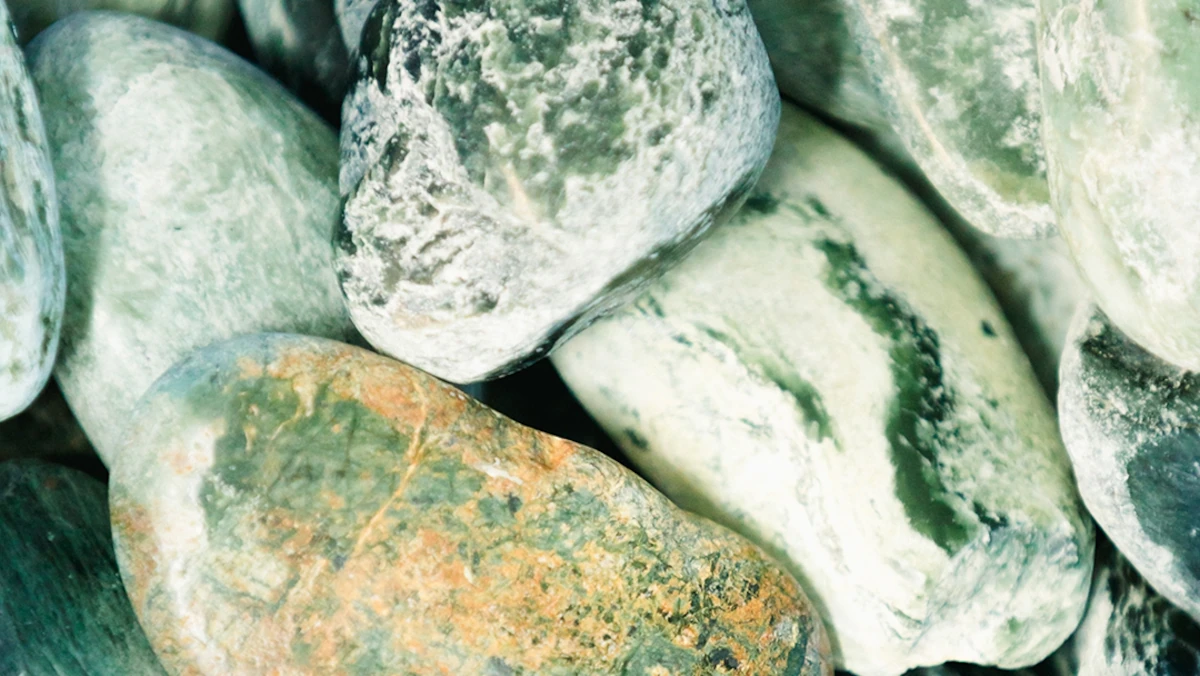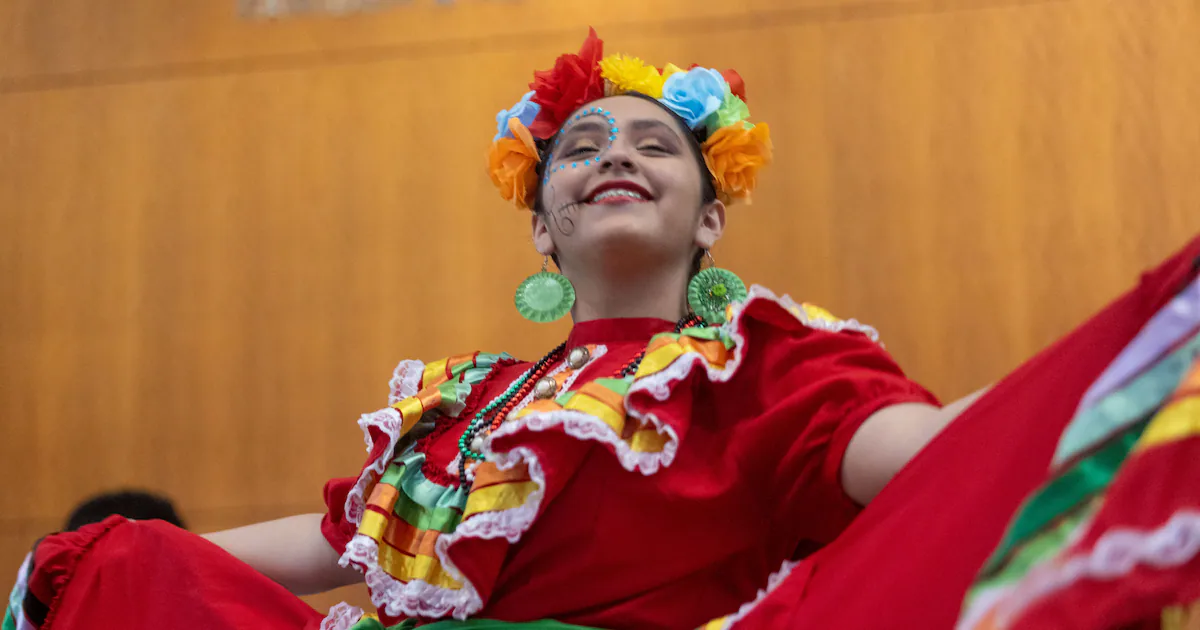Copyright National Geographic

This article was produced by National Geographic Traveller (UK). Te Rua Mason believes finding pounamu is much like finding love. Despite the spitting rain and biting wind, Te Rua, his son Henare and I are picking our way along the pebbled mouth of the Arahura River outside Hokitika township. The steel-grey Tasman Sea crashes and foams against the shore nearby, hurling salty spray into the air. Sky-wheeling seagulls bicker and caw. The weather might be dreary but Te Rua, my guide and founder of Te Rua and Sons Pounamu Trail tours, says it’s a good day to search for pounamu, a type of jade found exclusively on the west coast of New Zealand’s South Island. Too much sunlight can wash everything in an indiscernible glare — rain helps the stone’s natural green stand out among the limestone and quartz. Even with the weather’s help, finding pounamu is a fated encounter, a bit like meeting your soulmate — if it’s meant to be, the stone will find you. Today, it seems, I’m unlucky in love. I show Te Rua an emerald-coloured rock the size of a large apple, but he says the colour is just algae. “Practice makes perfect,” he assures me. An imposing figure with an intricate facial moko (a sacred tattoo that represents his Māori ancestry), my gently spoken guide opens up about his connection to the river as we walk. When he was a toddler, his family would come here most days to fish and forage for pounamu, a tradition that’s passed from father to son. Even with a lifetime of experience, Te Rua only started guiding tours along the ancestral waterway in recent years, as interest in pounamu foraging grew. “This river is a place of healing for us. The more time you spend here, having kōrero [conversations] with the river, the sooner you’ll develop an eye for pounamu,” he says. “Like people, every piece has its own special characteristics.” Also known as greenstone, jade or nephrite, pounamu is more valuable than gold among Māori people. The mineral was first encountered in lakes and rivers flowing down from the Southern Alps shortly after Māori iwi (tribes) first settled in the South Island, sometime between 1250 CE and 1300 CE. Unlike steel, pounamu didn’t dent or rust over time, and it made stronger tools, clubs, spears and arrow tips. It also came in a vast range of colours and shapes, from near black to gorse brown, bottle green, yellow and white with green speckles. By the 1500s, it was bartered for resources, exchanged as political gifts between chieftains and carved into talismans. Pounamu was once traded across South Island using over a dozen ancestral trails between the mountains and the coast. Decades of colonial settlement means those trails fell out of use or became inaccessible because they crossed private property, but the fastest — and traditionally most difficult — route can still be traversed aboard the TranzAlpine train. Touted as one of the world’s great rail journeys, the scenic passenger train passes through the Alps on a 139-mile coast-to-coast trip between Greymouth and Christchurch. A return trip can be completed in a day, but I’m planning to spend five days travelling the mountainous rail line, stopping off at alpine towns and cattle stations on my way. Inspired by Te Rua’s ancestors, I’m hoping to find and carve my own piece of pounamu, then carry it with me across the mountains, loosely following time-honoured ancestral pathways forged by iwi centuries earlier. Before I board the TranzAlpine, I first need to find pounamu — but my timing could have been better. Today is Matariki Eve, the Māori New Year marked by the emergence of the Matariki star cluster wheeling into the dawn sky. To mark the occasion, Te Rua has a hangi (a traditional meal baked in an underground oven) waiting to be unearthed and shared with his iwi. With our time on the river cut short, Te Rua gifts me a heavy fist-sized chunk of milky-green pounamu he’d found earlier. After a farewell hongi (a customary pressing of noses to share the breath of life), I head down the road to Hokitika, a small town with a long history of pounamu craftsmanship. Te Rua’s cousin, Ty Tainui, has a studio here. Bonz ‘n’ Stonz offers visitors hands-on workshops carving bones, shells and stones foraged locally, including pieces that visitors have found themselves. The master craftsman carefully turns my pounamu over in his hands, then says he knows just what to do. Standing at his work bench, surrounded by diamond-plated sanders and lapidary drills, Ty works the stone’s natural contours and invites me to have a try. “It’s great that visitors can come find a stone like this one and get to shape it, put their essence into it,” says Ty over the screaming sand belt. “There’s nothing better than something you’ve made yourself.” The following afternoon, as the TranzAlpine pulls away from the platform at Greymouth railway station, I hold my taonga (treasure) against the light pouring in through my seat window. Ty carved it into the shape of a hei matau, a fish hook talisman that brings strength and protection to travellers. It feels like a fitting choice for the mountainous journey ahead. Beyond the window, Greymouth’s supermarkets and warehouses give way to luminous grazing fields studded with dairy cows. The serpentine Arnold River runs beside the track, popping in and out of view behind thickets of yellow flowering gorse. My carriage is empty — I find my fellow passengers gathered in the open-air viewing carriage, alternating between hushed awe and excited chatter as the distant mountains rush to greet us. War & peace “It’s delightful when Swiss guests tell me this feels like home,” says Phil Barnett, the rambunctious salt-and-pepper-maned owner of Hotel Lake Brunner, who takes my bags when I disembark at Moana railway station an hour later. The comparison is spectacularly apt. Ringed by mountains capped with freshly fallen snow, Lake Brunner extends like a silver mirror towards distant Mount Tara Tama. A bristling peninsula of white pine trees juts out into the water and swooping fantails dapple the surface with their delicate wings. During the 20th century, Moana was an industrious sawmilling hub and freight trains were loaded with timber here, destined for the coast. When the industry started to decline in the 1960s, its station was slowly wound down and eventually closed to freight completely. The town settled into a quiet retirement, becoming a scenic stop on the TranzAlpine’s route — but its fortunes are changing. “When I first moved here 13 years ago there was just one other house on the hill, now there’s dozens,” says Phil, pointing to a grassy elevation studded with modern homes. Seeking a change of pace, the Christchurch native moved here with his family following the city’s devastating earthquake in 2011. Home to fewer than 100 residents, the town’s population swells in summer to over 2,000 holidaymakers in search of freshwater swimming, fishing and watersports. Many stay at Hotel Lake Brunner, mostly because it’s the largest hotel in town, but also because of its enviable position overlooking the lake, wood-fired hot tubs perfect for stargazing, and cosy hearthside dinners. It’s here I meet Keefe Robinson-Gore, a young Ngāi Tahu man smartly dressed in a black woollen coat. Having grown up immersed in his culture’s tikanga (customs), including Māori-led education programmes in the surrounding mountains, he’s the ideal guide for my journey to Christchurch. But, before we move on, we’ll explore Lake Brunner. After days of rain, I wake the following morning to bright-blue skies and gentle sunshine — the perfect conditions for a boat trip. Phil, Keefe and I set out over the lake’s tranquil surface. Originally, the campsites that are dotted around the shore here were designed to be accessed only by water, but Phil points out the construction of a new trail. When completed, it’ll allow hikers and cyclists to circumnavigate the whole lake. A seven-mile stretch along the western edge has already opened and I spot cyclists crossing suspension bridges and disappearing into the treeline. On the banks, parents unload kayaks from cars while their children languidly drift on the water on standup paddleboards. As we head eastwards, Keefe explains how his ancestors would have hiked to Moana following one of their ancestral pathways, then used the lake’s golden reeds to make waka (canoes) they could paddle down the Arnold River to Greymouth. It was a faster and more efficient way of transiting to the west coast than hiking down the mountain’s densely forested slopes. We come to a slow stop at Pah Point. Today, it’s covered in impenetrable forest but Keefe tells me it was once home to a village belonging to the Ngāti Wairangi iwi. It was a place where travellers could stop and trade before continuing their journey to the coast. Two stunted islands opposite the point were reserved for punishing transgressors, and it’s said that the worst offenders had their legs broken before being left to die. “Pah Point was a strategic defensive position,” explains Keefe. “From here, the Ngāti Wairangi could see people coming from either direction of the lake and guard the Arnold River’s head.” The village had access to fresh water, abundant fish, mussels, eels and woodhens, and was a rich source of pounamu, which rolled down from the mountains and tributaries into the lake. Greenstone flakes found here suggest villagers crafted pounamu around the fire when the weather wasn’t good for hunting or fishing. Perhaps, inevitably, its presence led to war. Around 1700 CE, a Ngāti Wairangi woman named Raureka discovered a route from the Arahura River across the mountains to the east coast, where she encountered the Ngāi Tahu iwi. In a generous act that would doom her people, Raureka showed them her path. A bitter decades-long war worthy of Game of Thrones erupted between the Ngāti Wairangi and Ngāi Tahu for control of pounamu. As we cruise past Pah Point, Keefe shares tales of ambushes that went awry and warriors escaping with the severed heads of their fallen chieftains clenched between their teeth. One of the final, decisive battles of the conflict was fought at Moana in the early 1800s. With Lake Brunner stained red, the Ngāti Wairangi were defeated and forced to retreat north. Keefe’s Ngāi Tahu ancestors wrested control of the village and its resources, securing the pounamu trade route from east to west. Phil steers the boat towards a campground and we haul up on the sand beside families who have pitched their campervans in front of the placid waters, oblivious to the blood-soaked history beneath their feet. Taking the high road Keefe and I board the TranzAlpine train that afternoon and continue towards the east, passing flocks of black swans bobbing on even blacker lakes and waterfalls spilling down the mountainsides into densely wooded valleys. The train stops at Otira township to add an extra diesel engine that will help propel it up the steep Otira Tunnel towards Arthur’s Pass railway station. At an altitude of nearly 2,400ft, it’s the highest stop on the route. At the top, the TranzAlpine decouples the extra engine and deposits Keefe and me at the platform before thundering off beneath a bubble-gum-pink sky. The sun has only just dipped behind the mountains and already a sudden chill has gripped the air, freezing our breaths. A short drive, first along a vertiginous highway that plunges towards the braided Waimakariri River on one side, then over alpine tundra, brings us to our stop for the night: Flockhill Lodge, a 36,000-acre sheep station that doubles as a luxury farm stay. The following morning, I find the whole station carpeted with frost. Wooden fences steam in the early light and frozen spider webs dangle in the tall grass like crystallised bunting. It’s undoubtedly beautiful, but it’s also a challenging environment for the hardy cattle and sheep raised here, and the farmers who tend to them. The hearth roars inside Sugarloaf, the lodge’s restaurant, set inside a long hall whose vaulted ceiling and sun-drenched windows resemble a modern take on a Māori marae (gathering house). Opposite the open kitchen, on top of a fridge filled with cured beef, mackerel and duck, sit rows of hand-labelled jars containing pickled walnuts, strawberries, onion flowers and fennel. Head chef Taylor Cullen tells me that his team cultivate and forage what they can from the kitchen’s gardens during the summer months, then ferment, cure and preserve everything they can to make it last the distance in winter. The tough alpine conditions mean creative solutions are needed for survival. It’s a challenge Keefe tells me his ancestors would have faced as they braved the mountain. While they would have traversed longer, lower-altitude trails most of the year and outside winter, in some cases necessity and speed would have driven them to brave the higher and shorter Arthur’s Pass. It was the Southern Alps’ most difficult crossing. To see how they survived, we head to nearby Kura Tawhiti, a hill crowned with weathered karst boulders overlooking the golden tundra. Sculpted by millions of years of wind and rain, and buckling in parts where the limestone has worn thin, Kura Tawhiti’s countless cracks and overhangs sheltered iwi families and war parties traversing Arthur’s Pass. By the 1860s, during New Zealand’s gold rush, European settlers rode through in horse-drawn wagons, ever on the lookout for gold robbers. Today, young New Zealanders haul mattresses up from the car park to practise bouldering under the imperious gaze of golden-winged falcons. It’s a fantastical place, and it’s easy to lose yourself exploring. As Keefe and I climb up and down and shimmy between boulders, he explains how the hill served a vital purpose for Ngāi Tahu travelling along pounamu trails as a mahinga kai — a reliable stopping place for food and shelter. “Kura Tawhiti means ‘a distant place where you find treasure’,” he says. “It was where east and west coast families could meet to share kai (food) and resources.” For the Ngāi Tahu who rested here, the resident Haast’s eagle would have been on the menu. An immense 40lb bird of prey with a 10ft wingspan, it inspired legends of man-eating monsters before it was hunted to extinction. Iwi would also have hunted the bright-green kākāpo, the world’s largest (and flightless) parrot. Now critically endangered, the bird is a target for conservation instead of dinner. If the hunt was lean, travellers survived on smoked eel, muttonbirds and taro pulled from woven flax backpacks, remains of which were discovered in a cave here in 1983. “Many of those preservation techniques are still used by our community, especially around Matariki, which is a time to feast and honour the recently departed,” says Keefe. The sun has ducked behind the mountains again by the time the TranzAlpine collects us from Arthur’s Pass. We chug over viaducts, which reveal final glimpses of the Waimakariri River far below before the landscape slips into darkness. Peaks glow in the moonlight like dragon teeth. The train hurtles past farms and towns, visible only as clusters of streetlights and porches, as we speed towards Christchurch and the end of the pounamu trail. I hold the jade hook in my hands and think of Keefe, Te Rua and Ty’s ancestors and the generations who travelled this mountainous pathway. Some steeled themselves for battle, others were excited to reunite with their families — many, perhaps, carried the heavy greenstone in their packs. How to do it Great Journeys New Zealand offers return tickets on the TranzAlpine train from NZ$259 (£113), with the option to upgrade to a Scenic Plus carriage, featuring premium seating and paddock-to-plate dining, from NZ$519 (£227). One-way tickets are also available; the journey takes five hours. Great Journeys also offers overnight packages with accommodation, such as the four-night Alpine Luxe Escape, which includes a villa stay at Flockhill Lodge, from NZ$5,499 (£2,400). Getting there & around Airlines including British Airways, Air New Zealand, Emirates and Qantas fly from UK airports to Christchurch, with one or two stops. Air New Zealand operates domestic flights from Christchurch to Hokitika. Average flight time: 24h30m. When to go Peak season for travel is December to February. The mountains remain cool year-round, reaching highs of 18-20C and lows of 11C in summer (December to February). Temperatures drop significantly in autumn (March to May) and winter (June to August), hitting 10C during the day and 0C at night. The TranzAlpine operates year-round, with a reduced timetable during winter. Sites and roads are quieter in winter compared to summer, with hotels offering off-peak rates. Where to stay Beachfront Hotel Hokitika. From NZ$285 (£124). Hotel Lake Brunner, Moana. From NZ$215 (£94). Flockhill Lodge, Lake Pearson. From NZ$3,250 (£1,417), full board. More info newzealand.com Published in the November 2025 issue of National Geographic Traveller (UK). To subscribe to National Geographic Traveller (UK) magazine click here. (Available in select countries only).



